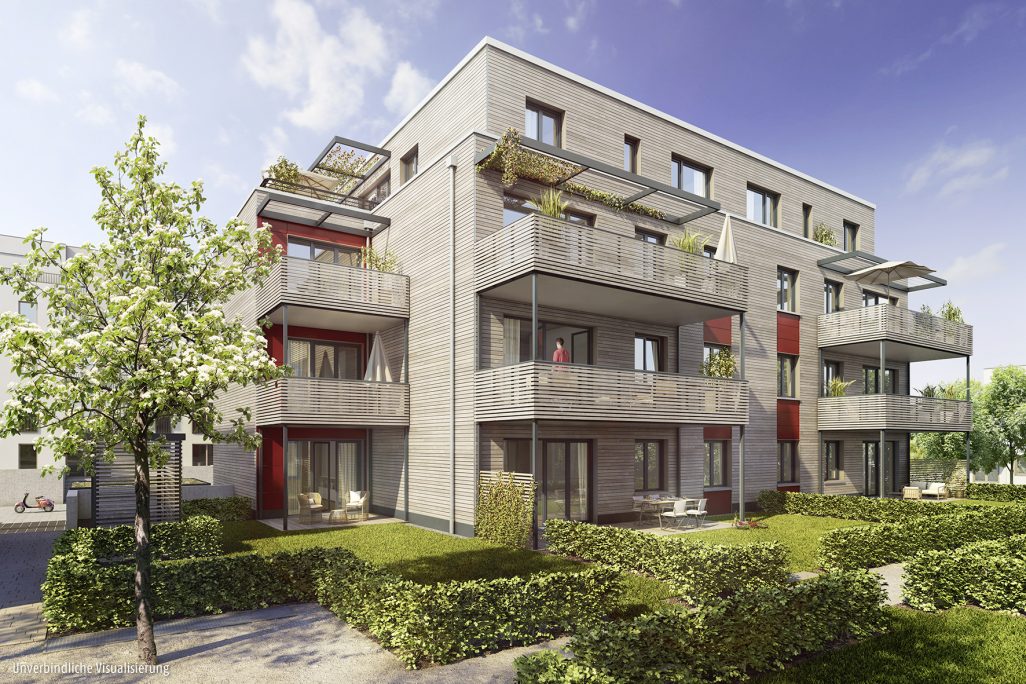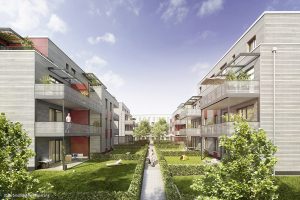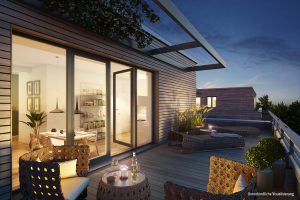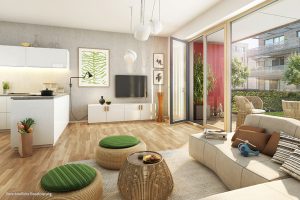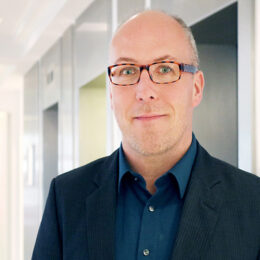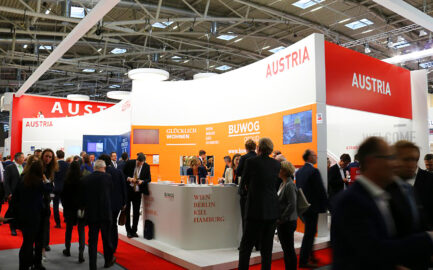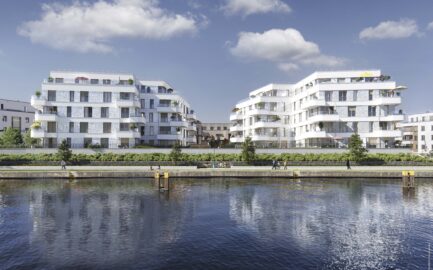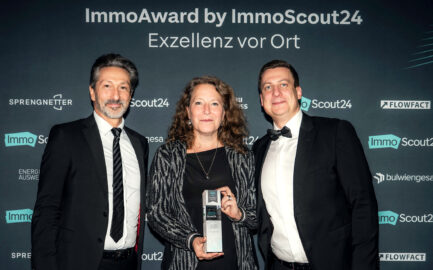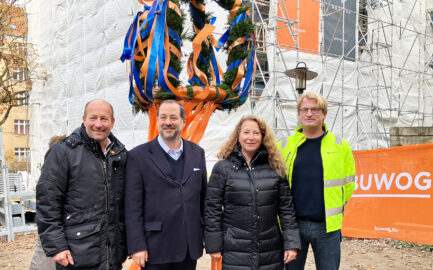In the southeast of Berlin, the BUWOG Group is constructing four innovative residential buildings using the wood-hybrid method. The regenerative raw material wood offers numerous advantages for people and the natural environment. An interview with architect Claus Kampmann of Kampmann, Fiedler, Fabianski Architekten.
You designed the so-called wood-hybrid “Kompasshaus” buildings in the 52° Nord quarter. What is that exactly?
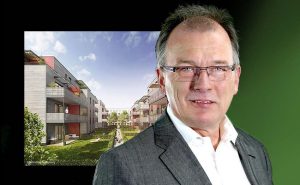
Claus Kampmann: The wood-hybrid method is a sustainable method that minimises the use of reinforced concrete. Instead, the focus is on the renewable material wood. The entire façade and the structure of the green rooftops of the “Kompasshaus” buildings are made of wood that comes from European forests. This is a great advantage in terms of sustainability, as short transport routes mean fewer emissions. We combine wood façades with insulation made of cellulose fibres, which is very often produced from recovered paper.
What advantages does building with wood have?
Wood construction is justifiably experiencing a modern renaissance. Wood is a natural, renewable building material that optimally meets the holistic requirements for environmentally friendly construction. The façades are precision-prefabricated in the factory with optimised support systems including the windows, which allows us to shorten the construction time. With insulation for the façade made of cellulose fibres, we avoid using foamed insulation materials and achieve extremely favourable insulation values with normal external wall thicknesses. The consistently energy-efficient construction method means state funding as a “KfW Efficiency House 40” is possible. The KfW-40 standard is also referred to as a near-zero energy house.
And what’s it like living in a wood-hybrid building?
Residents experience a healthy living environment there. The four “Kompasshaus” buildings form an optical unit with 50 apartments of about 80 to 110 square meters. We’ve put significant emphasis on compact, well-designed floor plans with exceptionally spacious balconies, terraces and private gardens. All of this combined with room heights of about 2.80 metres will ensure that the residents feel comfortable there in the quarter on the Dahme.
The 52° Nord quarter is located directly on the banks of the Dahme, which of course is a particularly lovely atmosphere. The element of water is also integrated into the quarter with a specially created 6,000-square-meter pool of water. It serves as a reservoir for accumulating rainwater, improves the microclimate, is ecologically self-cleaning, and creates a special atmosphere in the residential area.
Our “Kompasshaus” buildings incorporate these ideas of sustainability. The green rooftops contribute to a healthy climate as a natural temperature regulator and fine dust filter.
So how does it look with a sustainable energy supply?
Here, the quarter is pursuing a holistic, highly progressive approach. Heat and electricity are generated on the premises. The use of modern combined heat and power in a cogeneration plant “power-generating heating” makes this possible. The heat for the entire area is largely generated with renewable energies. A motor generates electricity, and the electricity is fed into the public grid. The waste heat of the engine heats the houses by way of a district heating network. This system is extremely energy efficient and environmentally friendly. We also thought about the future of electromobility at the “Kompasshäus” buildings. One third of the underground parking spaces are already equipped with their own electric metre for connecting to a charging station.
Fotocredit: BUWOG Group / www.buwog.com

